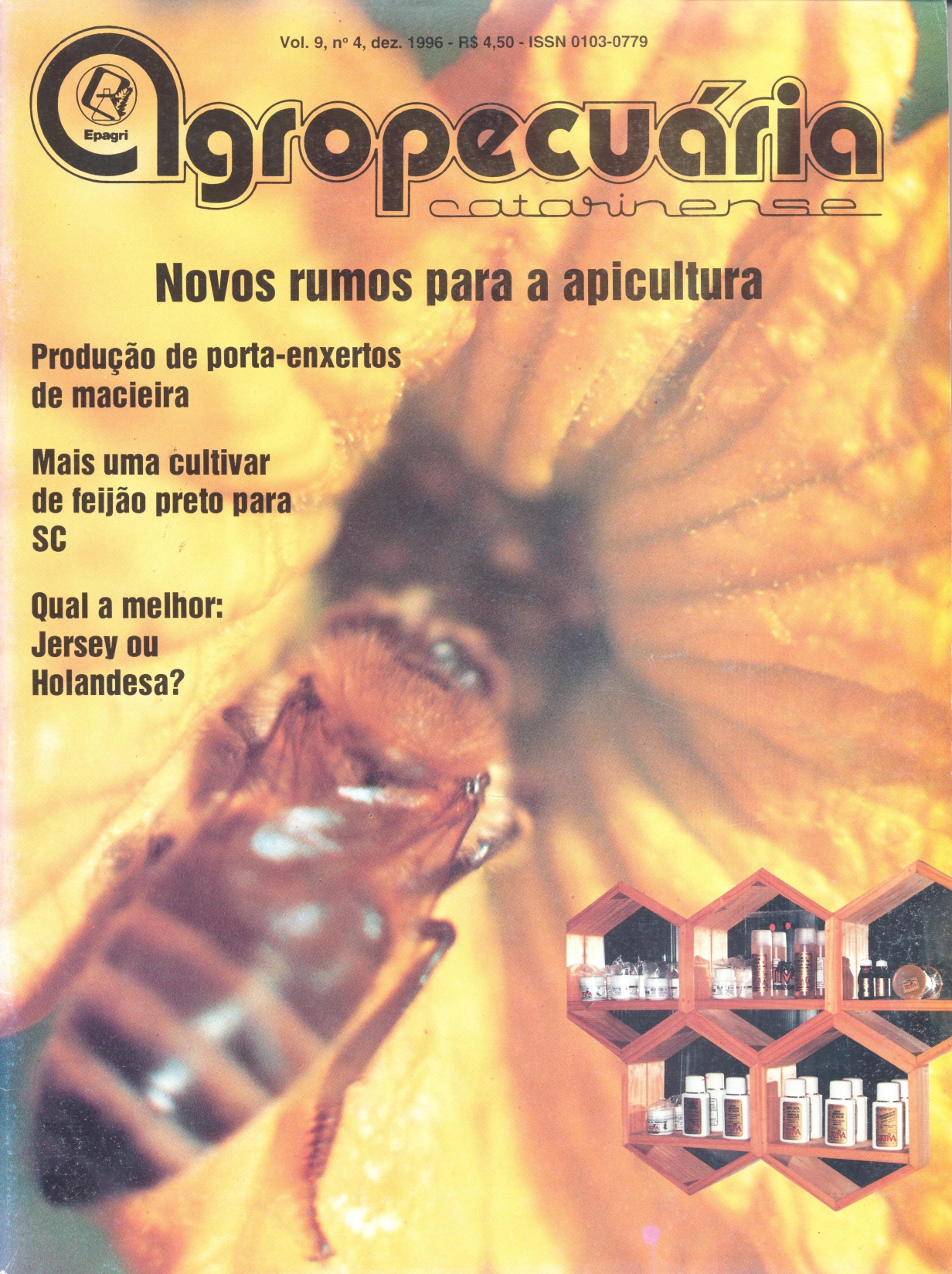Relationship between leaf waxiness and thrips population in garlic
Keywords:
physiology, resistance cultivarsAbstract
Virtually no research has been done on leaf waxiness in garlic and its relationship with thrips incidence. Therefore, given this fact, the present work was carried out with the objective of verifying the existence or not of this relationship. The thrips population is related to the epicuticular wax content in garlic leaves, because the greater the amount of wax in the leaves of a garlic cultivar, the greater the thrips population.
Publication Facts
Reviewer profiles N/A
Author statements
- Academic society
- Epagri - Revista Agropecuária Catarinense
- Publisher
- Empresa de Pesquisa Agropecuária e Extensão Rural de Santa Catarina - Epagri
References
EBERCON, A.; BLUM, A.; JORAN, W.R.A. Rapid colorimetric method for epicuticular wax content of sorghum leaves. Crop science, Madison, v.17, p.197-180, 1977.
FERREIRA, V.P. Aspectos fisiológicos e implicações genéticas da cerosidade foliar em (Allium cepa L.). Piracibaca: ESALQ/USP, 1979. 77p. Tese Doutorado.
JONES, H.A.; CLARKE, A.E.; STEVENSON, J.F. Studies in the genetics of the onion (Allium cepa L.). Proceeding of the American Society for Horticultural Science, Michigan, v.44, 479-484, 1944.
KOGAN, M. Plant resistance in pest management. In: METEALY, R.L.; LUCKMANN, W.H. Introduction to insect pest management. New York: John Willey, 1995. p.103-146.
MENEZES SOBRINHO, J.A. de. Pragas do alho. Informe Agropecuário, Belo Horizonte, v.4, n.48, p.41-44, 1978.
RAMIRO, Z.A. Comportamento de variedades e controle de Thrips tabaci Lnderman, 1888, em cultivares de cebola (Allium cepa L.). Piracicaba: ESALQ/USP, 1972. 144p. Tese de Mestrado.
Downloads
Published
How to Cite
Issue
Section
License
Copyright (c) 1996 Léo Teobaldo Kroth

This work is licensed under a Creative Commons Attribution 4.0 International License.





